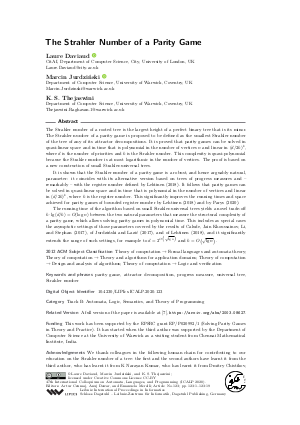LIPIcs.ICALP.2020.123.pdf
- Filesize: 0.49 MB
- 19 pages

 Creative Commons Attribution 3.0 Unported license
Creative Commons Attribution 3.0 Unported license




























Feedback for Dagstuhl Publishing